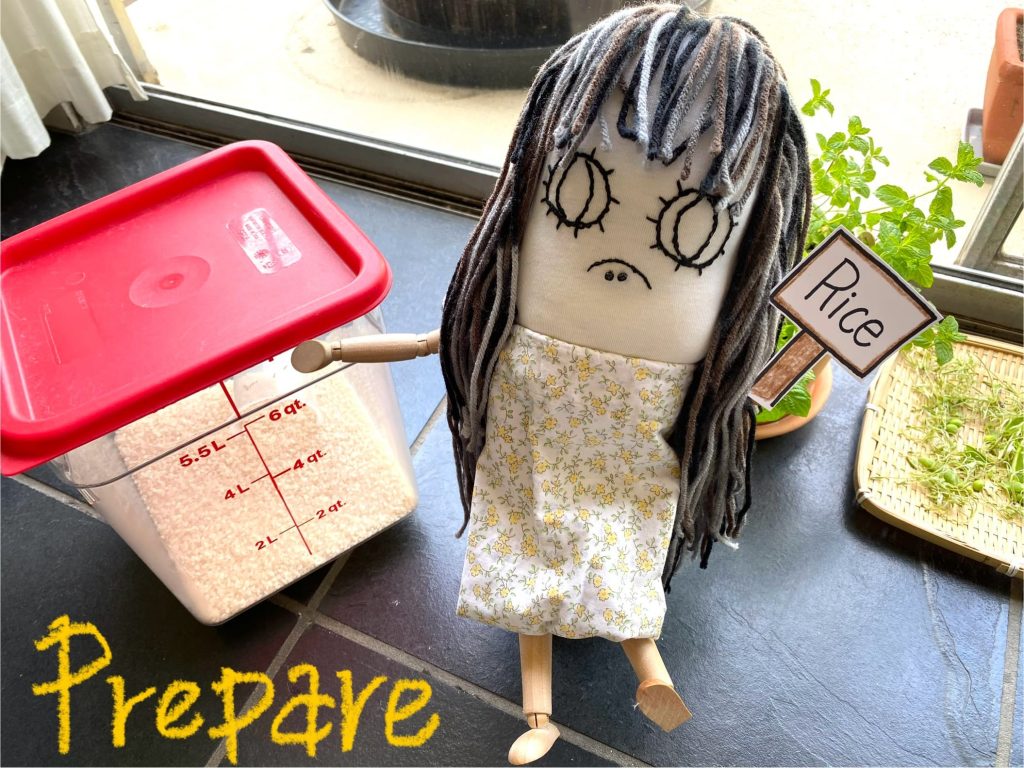
Rice for our long-term emergency stockpile.
I have rice, but how much do I need ?
Which rice should I get?
What is the best way to store rice?
It’s safe to say that rice is the most important food for Japanese people. That’s why I picked rice as my first choice for emergency food.
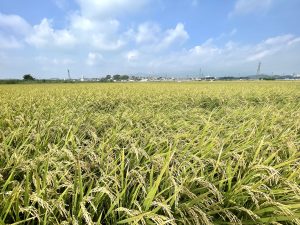
Probably many other cultures feel the same way about rice that Japanese people do. But I am in the U.S. now, and I don’t think the U.S. government has prepared emergency stockpiles of rice, certainly not in the same way the Japanese government has. So I have to prepare rice by myself.
💡
With unhulled rice, if you’ve used up all but your last few grains, you would still be able to grow rice. In a serious food crisis, unhulled rice will give us hope.
First, when we prepare rice for our long-term stockpile, we need to know what causes food to deteriorate. Oxygen, temperature, humidity and light can result in oxidation, the growth and proliferation of bacteria, mold, and mildew.
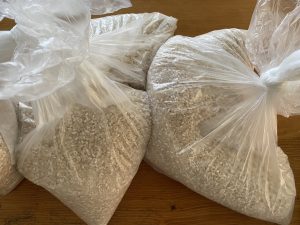
How to store rice (Goriyama’s simple way):
1. Buy rice (not new crop).
2. Use oxygen absorbers.
3. Use mylar aluminum foil bags.
4 .Store the bags in a cool area. (Rice can be heavy so make sure it’s in a strong, stable spot.)
That’s it.
Here’s a more detailed explanation.
1. Rice:
Unhulled rice is the best rice for our long-term stockpile. But it is heavier than brown rice and white rice (unhulled rice > brown rice > white rice). Therefore, unhulled rice might need more space. Here’s another interesting thing to consider; unhulled rice becomes seed for rice plants. With unhulled rice, even if you’ve used up all but your last few grains, you would still be able to grow rice. In a serious food crisis, unhulled rice will give us hope. I checked my grocery stores for unhulled rice, but it was very hard to find. So instead of unhulled rice, I decided to buy brown rice for my long-term stockpile.
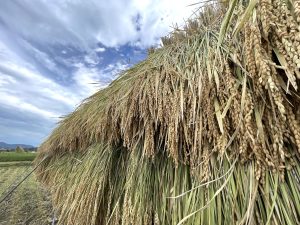
Here’s a quick historical note. At the end of the Japanese Edo period (1850), when Japanese people began eating white rice as their main dish, they started suffering from beriberi, caused by a vitamin B1 deficiency. Brown rice has vitamin B1. And even better, “germinated” brown rice has still more nutrition. If you can find germinated brown rice, I recommend you buy it for your long-term stockpile. Finally, I recommend avoiding new crop rice, because it contains more water and is therefore not suitable for long-term storage.
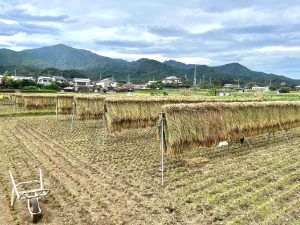
2. Oxygen Absorber:
Oxygen absorbers are essential for your long-term stockpile. Most oxygen absorber products are made from iron powder, sodium, and activated carbon (charcoal). Long ago, people used salting and drying techniques for food preservation (history). With oxygen absorbers, although it looks quite different, we are still using the same mechanism. How do we choose the capacity of the oxygen absorber packets? Everyone will choose their own container style, so we need to know this calculation method.
( Hight ✖️Width ✖️Depth➖Weight )✖️0.21 🟰 The amount (oxygen volume) of your oxygen absorber
(42cm x 28cm x 12.5cm – 6800g) x 0.21 =1659cc
This is my germinated brown rice. I measured it. My bag needed more than the 1659cc oxygen absorber capacity.
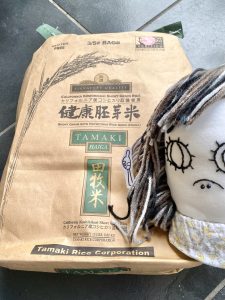

3. Mylar Aluminum Foil Bags:
These block light and air completely. They are very light and are not in danger of breaking like glass jars. Some people use f-style metal oblong cans (Air Sea Containers) instead of glass jars. I am a tidy up worker, and for me square-shaped containers are more convenient to set up and stockpile than round-shaped goods.
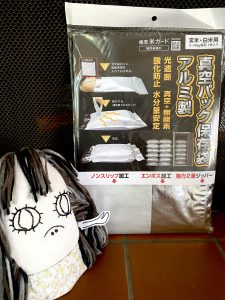


4. Stock place
Rice is very heavy. If you pile up a stack of heavy bags of rice, and leave them in one place for long periods of time, like years and years, you might run into trouble; your floor might sag, your shelf might break… Even if you have a lot of space, you still need to plan your setup carefully. I remember that my grandmother lined her storage space, under the floor, with metal to protect from fire.
My apartment doesn’t have an underground level, so I am thinking about getting this VEVOR metal box for my garage. Also, we should not forget about animals. At the very least, we need to store food in hard plastic containers to protect against insects, mice, and other potentially hungry animals.

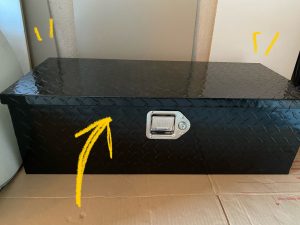
I’ve heard that if you store brown rice correctly, it can keep more than 30 years. Is that true? Well, I don’t know anyone who has eaten 30-year-old rice, but I’m going with yes.
See you next time.
Remember, “Protect your life by yourself” (自分の命は自分で守る). You need to survive first, and then you need your emergency supply. No matter how well you prepared your emergency supplies, if you die, then all of your preparations will have been for nothing. First and foremost, keep your health up all the time. Build your stamina so that if you need to, you can evacuate as quickly as possible. Stay healthy.
Pingback: How Much Food Do I Need for My Long-term Stockpile? (1 ) : #38 – Goriyama
Pingback: Emergency Stockpile Food 6: Canned Foods #27 – Goriyama